Sarah L. Johnson's Blog, page 75
December 3, 2016
Christina Courtenay's The Velvet Cloak of Moonlight, a step back in time to historic Raglan Castle
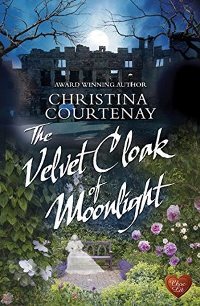 Coincidentally, this title came up for review while I was planning a trip to Raglan Castle in South Wales, and it turned out to be a perfect introduction to the site. It’s a well-written dual-time romance partly set against a pivotal episode of English Civil War history: the 1646 siege of Raglan, which was among the last Royalist strongholds to fall to Parliamentary forces. Today the castle is a picturesque ruin.
Coincidentally, this title came up for review while I was planning a trip to Raglan Castle in South Wales, and it turned out to be a perfect introduction to the site. It’s a well-written dual-time romance partly set against a pivotal episode of English Civil War history: the 1646 siege of Raglan, which was among the last Royalist strongholds to fall to Parliamentary forces. Today the castle is a picturesque ruin. Tess, the young Countess of Merrick, is the likeable present-day heroine. A talented furniture artist, she gained her title by marrying her estranged late husband, Giles, a compulsive gambler who was killed in a drunk-driving accident. Because of his habit, she has little money to spare. The estate was entailed, so Tess expects to vacate Merrick Court once Giles’s closest heir is found and moves in. He turns out to be Josh Owens, a handsome Kiwi adventurer. Initially Josh wants to sell the place, but he comes to find rural Welsh farm life appealing. He finds Tess appealing, too.
The time-shifts are smoothly handled. Tess and Josh begin seeing ghosts and tapping into the past through the eyes of a 1640s-era couple who seem to be warning them about something. Arabella Dauncey, the dispossessed heiress of Merrick Court, lives at nearby Raglan Castle as the Marquis of Worcester’s ward. Rhys Cadell, a Cavalier knight, cares for her but is unsure of her loyalties.
Courtenay provides wonderful visual details of the castle interior in its elegant former state. Readers are carried along on a daring moonlight ride and experience the siege as living spaces become overcrowded and Fairfax’s large New Model Army gathers outside, its cannonballs destroying Raglan’s walls piece by piece. Family squabbles, rumors of lost treasure, and a couple of nasty villains add to the entertaining plotline.
The Velvet Cloak of Moonlight was published in 2016 by Choc Lit ($11.99/£7.99). It's volume 4 of the Shadows from the Past series. Thanks to the publisher for approving my NetGalley access. This review first appeared in November's Historical Novels Review magazine.
And here are some pics of Raglan Castle, taken on the gray, drizzly morning of September 9, 2016. There were very few other tourists there, so there was ample room for exploring.
 The approach to Raglan Castle (photo by me), under gray skies
The approach to Raglan Castle (photo by me), under gray skies The picturesque ruins of Raglan, with the South Wales
The picturesque ruins of Raglan, with the South Wales countryside in the background (photo by Mark)
 An interior doorway and stairway, with historical marker (photo by me)
An interior doorway and stairway, with historical marker (photo by me)
Published on December 03, 2016 08:46
November 28, 2016
Rae Meadows' I Will Send Rain, a novel of the Dust Bowl in Oklahoma
 “God doesn’t use weather as a weapon,” thinks Annie Bell, wife and mother in a farming family in Mulehead, Oklahoma, in 1934. The grass is dry and crunchy, their crops are producing a fraction of their normal yield, and the wall of heavy clouds that overtakes their land brings not the hoped-for rain but a thick whirlwind of dirt that coats their fields, their animals, and all their belongings – indeed their very lives.
“God doesn’t use weather as a weapon,” thinks Annie Bell, wife and mother in a farming family in Mulehead, Oklahoma, in 1934. The grass is dry and crunchy, their crops are producing a fraction of their normal yield, and the wall of heavy clouds that overtakes their land brings not the hoped-for rain but a thick whirlwind of dirt that coats their fields, their animals, and all their belongings – indeed their very lives. Despite her status as a minister’s daughter, Annie doesn’t see their dire situation as any type of divine punishment. Her husband Samuel, on the other hand, holds to his Christian faith. In “dreams of ferocious rain” that disturb his sleep nightly, God appears to be calling him to a specific purpose.
Meanwhile, their 15-year-old daughter Barbara Ann, called Birdie, pursues her attraction to a neighbor’s son, and their youngest, Fred, an observant and fragile boy, cares for his hens and wanders around exploring the land. Although he’s unable to speak, he picks up on nuances that others miss.
The Dust Bowl was one of the worst ecological disasters of the 20th century. In her fourth novel, Meadows keeps the focus tight and intimate, homing in on its damaging effects on one homesteading family.
The drought serves as a catalyst that drives each of the Bells onto separate paths. All are uprooted from their normal roles. Even sensible Annie, baffled by the odd behavior in the husband she loves, acts against what she feels is her true self by flirting with the mayor, Jack Lily, a younger man from Chicago.
The author lets these scenarios play out logically without passing judgment on anyone’s decisions. The land may be harsh and unwelcoming, but her tone is as compassionate as her language is rich, and it’s just what these characters need. Even Samuel, who could have been depicted as a stereotypical religious zealot, never loses his rational side, which makes his transformation even more unsettling. The story also makes plain that people and crops aren’t the environment’s only victims: the animals suffer greatly, too. The plight of the rabbits and cows are doubly tragic, since they’re betrayed by both the land and humans.
Timeless scenarios, like Birdie’s inability to see her mother as a woman with her own emotional needs, are made real and authentic. I particularly liked the depiction of the house abandoned by the Bells’ neighbors, the Woodrows. Left to desiccate after they take off for California, it comes to represent the unacknowledged side of people’s natures.
Other symbolism feels a bit too heavy-handed, like the wooden ark Samuel constructs with Fred’s help, and that subplot’s resolution. It feels out of place in a work that otherwise seems poignantly real. I also wondered how a young city guy like Jack Lily came to be elected mayor of a rural Great Plains town. Still, this is an admirable, deeply felt novel that gives voice to a proud, resilient family and the challenges that nature forces them to endure.
I Will Send Rain was published by Henry Holt in August (hb, 272pp, $26). I picked up this ARC at the publisher's booth at BEA in May.
Published on November 28, 2016 19:05
November 25, 2016
A royal coming of age: Daisy Goodwin's Victoria
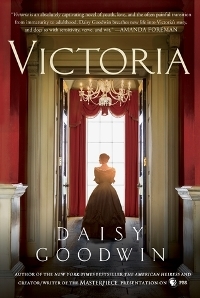 Daisy Goodwin’s Victoria, which the author wrote alongside the screenplay for the upcoming Masterpiece TV series, follows the young queen from her ascension to Britain’s throne in 1837 through her marriage proposal two years later to her cousin, Prince Albert of Saxe-Coburg-Gotha. The smooth writing and sympathetic portrayal of Victoria makes it easy to be drawn into her world.
Daisy Goodwin’s Victoria, which the author wrote alongside the screenplay for the upcoming Masterpiece TV series, follows the young queen from her ascension to Britain’s throne in 1837 through her marriage proposal two years later to her cousin, Prince Albert of Saxe-Coburg-Gotha. The smooth writing and sympathetic portrayal of Victoria makes it easy to be drawn into her world. The novel succeeds in humanizing a woman who gave her name to an era, and many details reflect her life (Goodwin used the queen’s diaries as inspiration). That said, its tendency to romanticize and to rework other events for dramatic effect may turn off some readers. For example: in history, Victoria’s mother woke her on the morning of her royal uncle’s death; she didn’t intervene with the Chartists; and she didn't see Melbourne as a love interest.
The relationship between Victoria and her Prime Minister, William Lamb, Lord Melbourne, is central to the story and to her reign’s beginning. Victoria is bright and willing to learn, but her secluded childhood has left her unprepared for the requirements of her role. Forty years older than the 18-year-old queen, Melbourne acts as her mentor, friend, and frequent social companion. His constant presence in her life demonstrates her strong will, but her refusal to give up the man she’s developed a crush on (in real life, they had a platonic, father-daughter type of bond) leads to gossip and political turmoil.
The novel weaves in many political events occurring over the novel’s two-year span: the Hastings affair, the “bedchamber crisis,” and the Newport Rising. Although these scenes involve some tweaking of timelines and more, they illuminate Victoria’s difficult task: to come of age and gain sufficient wisdom to reign effectively with the whole country watching.
In addition to the portrait of Victoria herself, that of her mother, the Duchess of Kent, is particularly nuanced. Is the Duchess overprotective and controlling, or does she truly love her daughter? Is she unduly influenced by the ambitions of her companion, Sir John Conroy, or is she a lonely widow in need of affection? All of these are true.
As for Albert, the intended suitor Victoria resists for so long and finally comes to love – he only appears in person toward the end. Despite his lack of on-page time, they seem a good match. Handsome and principled yet overly serious, he’s hardly a classic hero, but she comes to appreciate his directness.
TV dramatizations and films about actual figures are known for playing fast and loose with history. Readers of historical fiction can tolerate this to some degree, and an author’s note often helps, yet – unsurprisingly given its connection to the TV series – none is included in Victoria. It’s enjoyable to read for its intimate depiction of its young heroine’s emotional and political growth, but anyone curious about the real woman should follow up with a biography about her.
Victoria was published by St. Martin's Press this week in the US and Canada ($26.99/C$37.99, hardcover, 404pp). Thanks to the publisher for sending me a copy. In the UK, the publisher is Headline Review.
Published on November 25, 2016 08:34
November 22, 2016
Scandal, Georgian-style: The Wife's Tale by Christine Wells
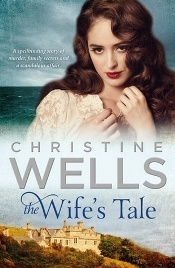 This is a dual-narrative novel with a difference. In one section, a modern-day woman becomes intrigued by centuries-old secrets about an elegant country home and its former mistress, a mysterious dark-haired lady in red. The historical thread centers on that lady’s troubled marriage in Georgian England, which conjures up images of decadent aristocrats and scandalous affairs. Wells, a debut novelist, takes a fresh approach to both story lines, intertwining them in surprising and satisfying ways.
This is a dual-narrative novel with a difference. In one section, a modern-day woman becomes intrigued by centuries-old secrets about an elegant country home and its former mistress, a mysterious dark-haired lady in red. The historical thread centers on that lady’s troubled marriage in Georgian England, which conjures up images of decadent aristocrats and scandalous affairs. Wells, a debut novelist, takes a fresh approach to both story lines, intertwining them in surprising and satisfying ways. Liz Jones is a fabulous character. A career-driven corporate lawyer from Brisbane, she’s outgoing, funny, and occasionally blunt, but it’s for the right reasons. When her boss asks her to travel to the Isle of Wight and investigate the history of Seagrove, a stately home once owned by his ancestor, she resists – a beach vacation with her husband awaits.
But her marriage is shaky, and their joint holiday doesn’t happen, so soon Liz finds herself abroad, renting Seagrove’s guest cottage. Here she gets entangled with the Nash family, including guarded, down-to-earth Theo, while pretending to be researching Delany, his notorious ancestress. Wells’ background as an attorney adds depth: in 1789, Delany’s husband, an earlier Lord Nash, goes to court against his brother Julian, a “radical rogue and reckless libertine,” for supposedly having seduced his beautiful wife.
There’s more to the story, of course. What stands out is how real the situations feel, and how skillfully Wells avoids stereotypes. Delany makes a grand entrance into the courtroom and novel, complete with ostrich-plumed hat and confidence to spare, but her version of her alleged adultery (as her journal reveals) takes unexpected twists. Liz’s story also has significant heft, especially when her deception begins to clash with her closeness to the Nashes, Theo in particular. Even the villainous characters are drawn with nuance. Full of great dialogue, romance, and a breathtaking coastal landscape, this engrossing novel deserves a wide audience.
The Wife's Tale was published by Penguin Australia in 2016 (trade pb, A$32.99, 439pp). I bought my own copy from Fishpond after seeing positive reviews of it elsewhere. This review first appeared in November's Historical Novels Review. I hope the book will find a US publisher.
This is my 5th post for the 2016 Australian Women Writers Challenge.
Published on November 22, 2016 06:31
November 17, 2016
#ReadUP! Ten recent historical novels from university presses
University Press Week, sponsored by the Association of American University Presses, runs from November 14-19 this year. It's been celebrated since 1978, and in acknowledgment of this year's event, I'm presenting ten recent historical novels from university presses. While better known for publishing scholarly nonfiction, many university presses offer a selection of fiction titles, often focusing on topics set within their region.
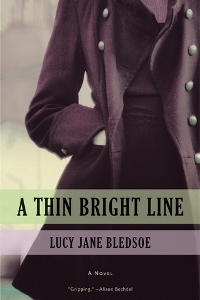
The author fictionalizes her aunt's secret and courageous past as a science writer and lesbian during the Cold War years. University of Wisconsin Press, 2016.
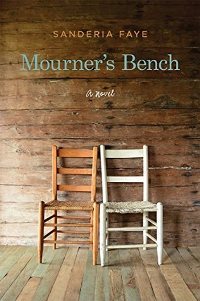
A girl in small-town Arkansas in the 1960s has her eyes opened to the religious and racial tensions in her community. University of Arkansas Press, 2016.
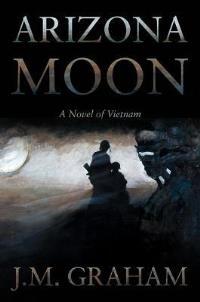
The author based his novel about three men in the free-fire zone known as the Arizona Territory in Vietnam's An Hoa Basin on his own wartime experiences. Naval Institute Press, 2016.
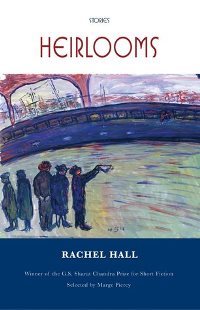
A collection of interlinked stories about four generations of a Jewish family, moving from France to America starting during the WWII years. See the author's guest post. BkMk Press of the University of Missouri-Kansas City, 2016.

Set in California's Great Central Valley in the '40s, the story of Bea Franco, who was fictionalized as "Terry, the Mexican girl" in Jack Kerouac's On the Road. See my earlier review. University of Arizona Press, 2016 (paperback).
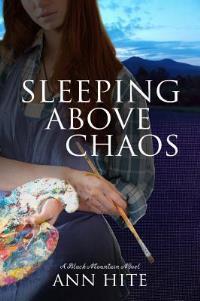
Described as an East of Eden-type saga set in the Appalachian Mountains, this novel takes place in the 1940s and follows characters first mentioned in the author's earlier Black Mountain Saga books. Mercer University Press, 2016.
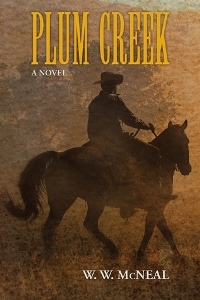
In post-Civil War Texas, a teenage boy joins with two of his uncles, a black man, and a Texas ranger to rescue a young girl from violent renegades. TCU Press, 2016.

This debut novel focuses on two Catholic families, one white and one black, whose women work on segregated floors of the same cigar factory in Charleston, South Carolina, during the world wars. University of South Carolina Press, 2016.

A multi-generational novel about the women of the Goode-Brown family, set in the rural black township of Opulence, Kentucky starting in the 1960s. University Press of Kentucky, 2016.
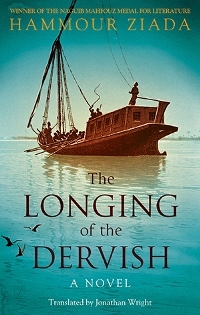
Set in Sudan in the late 19th century, this prizewinning novel (Naguib Mahfouz Medal, 2014) tells the story of two lovers, a Sudanese man and a Greek woman, whose lives are torn apart during the Mahdi uprising. American University in Cairo Press, 2016.

The author fictionalizes her aunt's secret and courageous past as a science writer and lesbian during the Cold War years. University of Wisconsin Press, 2016.

A girl in small-town Arkansas in the 1960s has her eyes opened to the religious and racial tensions in her community. University of Arkansas Press, 2016.

The author based his novel about three men in the free-fire zone known as the Arizona Territory in Vietnam's An Hoa Basin on his own wartime experiences. Naval Institute Press, 2016.

A collection of interlinked stories about four generations of a Jewish family, moving from France to America starting during the WWII years. See the author's guest post. BkMk Press of the University of Missouri-Kansas City, 2016.

Set in California's Great Central Valley in the '40s, the story of Bea Franco, who was fictionalized as "Terry, the Mexican girl" in Jack Kerouac's On the Road. See my earlier review. University of Arizona Press, 2016 (paperback).

Described as an East of Eden-type saga set in the Appalachian Mountains, this novel takes place in the 1940s and follows characters first mentioned in the author's earlier Black Mountain Saga books. Mercer University Press, 2016.

In post-Civil War Texas, a teenage boy joins with two of his uncles, a black man, and a Texas ranger to rescue a young girl from violent renegades. TCU Press, 2016.

This debut novel focuses on two Catholic families, one white and one black, whose women work on segregated floors of the same cigar factory in Charleston, South Carolina, during the world wars. University of South Carolina Press, 2016.

A multi-generational novel about the women of the Goode-Brown family, set in the rural black township of Opulence, Kentucky starting in the 1960s. University Press of Kentucky, 2016.

Set in Sudan in the late 19th century, this prizewinning novel (Naguib Mahfouz Medal, 2014) tells the story of two lovers, a Sudanese man and a Greek woman, whose lives are torn apart during the Mahdi uprising. American University in Cairo Press, 2016.
Published on November 17, 2016 06:00
November 13, 2016
Book review: The Underground Railroad, by Colson Whitehead
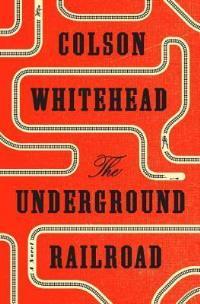 In the antebellum era, Cora, a teenager born into slavery on a Georgia plantation, agrees to flee with a literate new arrival, Caesar, and head north with him to freedom. Cora had been a particular target of Terrance Randall and his overseer due to her brave defense of a fellow slave, and because her mother had successfully escaped five years earlier. At every step along her route, a slave tracker hunts her down.
In the antebellum era, Cora, a teenager born into slavery on a Georgia plantation, agrees to flee with a literate new arrival, Caesar, and head north with him to freedom. Cora had been a particular target of Terrance Randall and his overseer due to her brave defense of a fellow slave, and because her mother had successfully escaped five years earlier. At every step along her route, a slave tracker hunts her down. “A plantation was a plantation; one might think one’s misfortunes distinct, but the true horror lay in their universality.” The same holds true of each stop Cora makes along the underground railroad, creatively imagined here as a literal set of subterranean tracks on which trains carry their desperate passengers somewhere else – anywhere else. Cora’s harrowing experiences in different states reflect not only African-Americans’ pre-Civil War lives but also the bigotry and racist violence they faced in later historical periods – today included.
Most works of literary fiction (as this one is) offer deeper characterizations than is shown here, and some readers may be frustrated at the lack of emphasis on Cora’s inner feelings. However, the writing follows in the authentic style of historical slave narratives. Cora’s tale unfolds in direct, unembellished language that reads quickly and allows for no ambiguity.
As a highly anticipated title by a prominent author, and as an Oprah pick, this novel will be widely read and discussed – as it should be. It’s heartbreaking, occasionally brutal, and undeniably relevant. It also deserves more than one reading. Cora is an immensely courageous heroine, and the novel’s underlying sense of hope lies not only in her determined quest for liberty but in the many individuals, both named and unknown, who risk their lives to help her achieve it.
The Underground Railroad was published in September by Doubleday in hardcover ($26.95/C$34.95, 320pp). This review first appeared in November's Historical Novels Review, thanks to a NetGalley copy provided by the publisher.
Published on November 13, 2016 06:00
November 7, 2016
Forthcoming historical novels for 2017 on the HNS website
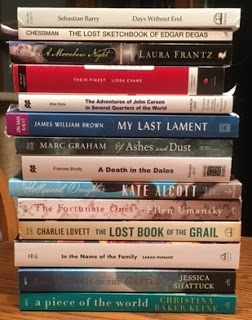 Just a short post for now.
Just a short post for now.For many years, I've been compiling listings of forthcoming books for the Historical Novel Society website.
I finally got a good start on the guide to forthcoming historical novels for 2017, so if you're curious to see what will be appearing in print through next August, click on over to the HNS site for details. It's a work in progress, with more titles (including those from the UK) to be added later on.
Lots of good reading is on the way in the next year!
Published on November 07, 2016 18:50
November 3, 2016
Spiritualism at the seaside: Jessica Estevao's Whispers Beyond the Veil
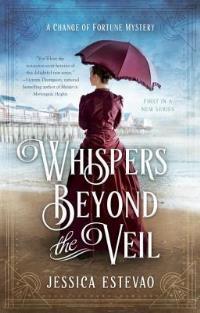 The seaside resort town of Old Orchard Beach, Maine, is the setting for this enjoyable first novel in a new lightly paranormal mystery series. In 1898, Ruby Proulx finally manages to escape her controlling father, a traveling medicine show hawker, but the circumstances are less than ideal.
The seaside resort town of Old Orchard Beach, Maine, is the setting for this enjoyable first novel in a new lightly paranormal mystery series. In 1898, Ruby Proulx finally manages to escape her controlling father, a traveling medicine show hawker, but the circumstances are less than ideal.For years, the pair had peddled nostrums and other miracle cures to unsuspecting “rubes,” but after Mr. Proulx’s newest scheme turns deadly, Ruby must flee Canada and hope the aunt she never knew will take her in. Her Aunt Honoria’s establishment, the Hotel Belden, is a haven for Spiritualist seekers, a fact that could prove tempting for a young woman who’s an expert fraudster. “If I had not promised myself to go straight, the temptation to feign psychic ability would have been overwhelming,” Ruby admits.
Ruby’s narrative voice is an engaging mix of youthful vitality and not-quite-innocence, and she herself hears a voice that guides her at opportune moments. However, she’s never been comfortable with her clairaudient ability and isn’t sure whether to trust it or anyone. She worries her past will catch up with her. The cast is large, ranging from the diverse psychic practitioners and servants employed by the hotel, their guests, local police and businessmen, and the Indians who travel from the Canadian Maritimes every summer and make a living from the tourist trade. The setting feels realistic and draws readers into a world of parasols, bathing costumes, and social calls, plus grimmer realities like a late 19th-century version of gentrification.
The first half concerns Ruby’s quest for belonging and the search for a pickpocket who attacked her when she first arrived in Maine. The real crime happens quite late in the story, but clues are carefully planted for readers to find, and the ending leaves sufficient threads for the next volume.
Whispers Beyond the Veil, first in the A Change of Fortune mystery series, was published by Berkley in September. This review first appeared in the Historical Novels Review's November issue. Thanks to the publisher for approving my NetGalley access.
Published on November 03, 2016 14:16
October 31, 2016
An impossible wartime mystery: Karolina's Twins by Ronald H. Balson
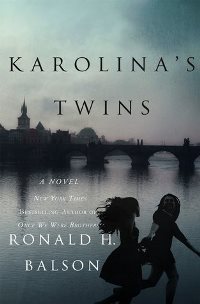 How could anyone today hope to find what happened to two infants, twin girls, who vanished somewhere in Nazi-occupied Poland? It seems an impossible task.
How could anyone today hope to find what happened to two infants, twin girls, who vanished somewhere in Nazi-occupied Poland? It seems an impossible task. Chicago lawyer Catherine Lockhart and her husband, private detective Liam Taggart, have a reputation for solving mysteries from the WWII era, which is why Lena Woodward, an elderly widow and Holocaust survivor, asks them to help her. Lena intends to keep a promise she made long ago: to find her friend Karolina’s long-lost twins. “She was my dear, dear friend,” Lena tells them. “She saved my life, but in the end I could not save hers.” Although doubtful at their chances of success, Catherine and Liam agree to hear Lena out.
Lena’s heartrending and suspenseful account, which begins with her childhood in the Polish town of Chrzanów, is easily the book’s most compelling aspect. The format feels awkward at first; the two timelines (present and past) don’t appear in alternating chapters, as is more common for multi-period novels. Instead, the majority of Lena’s story is told through her dialogue. To Catherine and Liam, Lena reveals her plight as a Jewish girl forced to survive on her own in a danger-filled land, distraught after hearing her parents and disabled younger brother carted away by the Germans. Through her eyes, readers will experience her risky flight through the rural Polish countryside; her work at a German-run garment factory back in Chrzanów, under the supervision of a good-looking Jewish manager; and her reunion there with Karolina, whose pregnancy forces the young women to make desperate decisions.
Lena’s account of survival and immense bravery was inspired by the real-life experiences of Fay Scharf Waldman, a woman who came to one of Ronald Balson’s book signings for an earlier novel and gave him permission to fictionalize her story. Catherine and Liam’s occasional banter about the baby they’re expecting feels jarringly superficial in comparison, but their roles in Lena’s pursuit of the truth become more intriguing and complicated when Lena’s son, Arthur, gets involved. He claims his mother suffers from a senile obsession with the past, and that the investigative couple are trying to fleece her out of her money. Balson is a Chicago trial attorney, and he skillfully leads readers through the tangled legalities of Arthur’s petition and Catherine’s daring response to it.
The novel’s functional, efficient prose gets the job done and ensures a brisk pace up through the dramatic ending, which is worth waiting for.
Karolina's Twins was published by St. Martin's Press in September (hb, 306pp). Thanks to the publisher for providing me with a review copy.
Published on October 31, 2016 11:00
October 26, 2016
A literary murder in Leeds: Frances Brody's Death of an Avid Reader
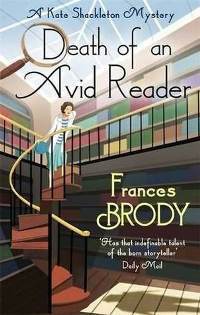 “Young people working in a library are no different from those working anywhere else,” says private investigator Kate Shackleton. “They must have a little amusement.”
“Young people working in a library are no different from those working anywhere else,” says private investigator Kate Shackleton. “They must have a little amusement.” In this 6th outing in Frances Brody’s ongoing series set around Leeds in the 1920s, Kate finds herself solving multiple mysteries at once. First, Jane, Lady Coulton, hires Kate to find the secret illegitimate daughter she was forced to give up over 20 years earlier. The baby was raised by the sister of Lady Coulton’s former nanny, a fishmonger’s wife, but she and her family have moved elsewhere, and the trail has gone cold.
In addition, as a longtime shareholder of the Leeds Library, Kate agrees to participate in a religious ritual to banish the resident “ghost” from the library’s basement. She believes any odd happenings people experienced were more likely caused by teenage pranks than poltergeists but goes along with the process. To everyone’s shock, the ceremony turns up the dead body of one of Kate’s fellow readers. The local police inspector immediately blames an Italian organ grinder, based on circumstantial evidence, even though Kate knows the man was too ill to commit the crime. There are also rumors of a book thief afoot…
Kate is a heroine that modern women can appreciate. A capable detective who refuses to downplay her intelligence, Kate knows that many men don’t consider her their equal, but she refuses to let that stop her. She simply gets on with the job, even when Inspector Wallis makes it clear that her help is unwelcome.
While the books in the series can stand alone (I’ve read three so far), each new entry serves to enhance the characterizations in the previous volumes. In Death of an Avid Reader, Kate’s WWI nursing experience comes to the forefront again, and she – and the reader – gets to learn more about Mrs. Sugden, her longtime housekeeper.
The story sprawls a bit early on, but Kate’s dry humor keeps her narrative sharp and lively, and, as always with this series, the sense of place and period remain strong. I admit to being fooled about how the investigations would resolve, but this is a good thing in my view, and I look forward to seeing how Kate's relationship with Inspector Wallis develops.
Death of an Avid Reader was published by Minotaur in September ($25.99/C$36.99, hardback, 360pp). Thanks to the publisher for sending me an ARC. For reviews of earlier books in the series, see Murder in the Afternoon and Murder on a Summer's Day .
Published on October 26, 2016 11:40



